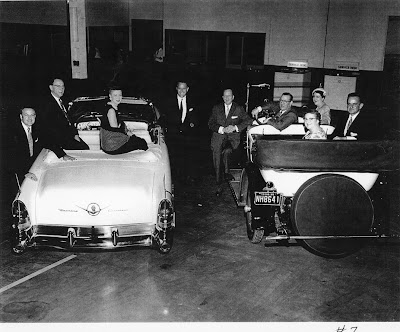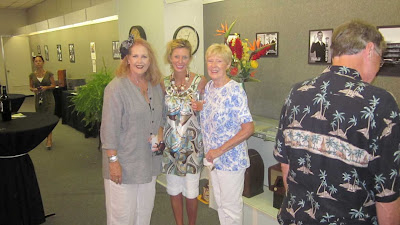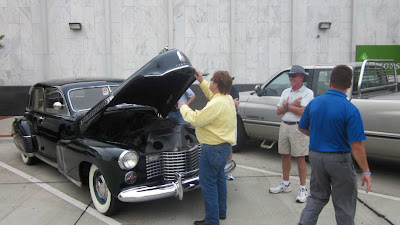High Class at a Low Price
1940 Packard 110 Business Coupe
TEXT AND PHOTOGRAPHY BY DAVID W. TEMPLE
Starting in August 1939, Packard Motor Car Company had entered the first full model-year of its four-year plan to make the company competitive with those makes in the low-medium and medium-priced markets. Packard had been in the premium car arena since founder James Ward Packard declared his desire to build the best automobile money could buy way back in 1899. However, the Great Depression revealed to the company’s managers that survival would be highly doubtful if Packard did not expand its product line into the price range where 40 percent of all domestic car sales occurred. The model One-Twenty, which debuted for 1935, and the introduction of a new six-cylinder model for 1937, brought the needed results. To keep up with demand and cut costs, Packard had to modernize its facilities; greater efficiency meant more production at less cost, which in turn meant prices cold be lowered to more competitive levels.
Though Packard now mass-produced low-medium and medium-priced cars, they did not exit the premium car market, which had established their reputation for producing fine automobiles. In fact, their efforts resulted in cars in almost all price ranges, though the very luxurious and prestigious Packard Twelve was no longer a part of the lineup for 1940; it was simply too expensive to build (especially by hand) and brought too few orders to justify its continued existence. The Custom Super Eight One-Eighty and Super Eight One-Sixty essentially replaced the twelve-cylinder Packard. (However, the most premium Packards were not actually built at that company’s facilities, but farmed out to legendary stylist, Howard “Dutch” Darrin. Buyers could order the cars through a dealer; Darrin built the cars in his shop which the old Auburn plant in Connersville, Indiana. Furthermore, custom-builders Rollson, Derham, and Bohman & Schwartz survived the economic depression to offer their services, too.) Very few of Packard’s sales came from the “senior” cars during this time, though.
Packard’s ads in “The Saturday Evening Post” and “Colliers” declared their cars had the “lowest prices in Packard history” though advertised prices for all models did increase very modestly twice during the model year. The lowest-priced series was the One-Ten, which was the only six-cylinder car in the Packard line and was comprised of six styles (plus a bare chassis for commercial applications). The lowest-priced car in this group was the Business Coupe, which had a price tag of $867 in base trim throughout the model year. Packard advertising for this model underscored the relatively low price by saying it “Runs like a Song – for a Song!” The rest of this lineup also known as the 1800 Series was comprised of a station wagon, two- and four-door sedans, a club coupe, and a two-door convertible; the latter was the most expensive of the 1800 Series with an initial price of $1,087.
Regardless of the price paid for a One-Ten model, the buyer received the smooth running inline six with a swept volume of 245 cubic inches and 100-horsepower output. This engine had four main bearings, balanced crank shaft, mechanical valve tappets, aluminum pistons weighing 20 ¼ ounces each, and a cast-iron cylinder head and block. The standard compression ratio was 6.39:1, though an optional 6.71:1 compression engine was offered at extra cost. The remaining standard features of the One-Ten were minimal and included tan or blue-gray broadcloth upholstery, electric clock, and a cigar lighter. All Packard models for 1940 could be had with the optional and improved Econo-Drive – the marketing term for the overdrive unit again this year. A popular option, Econo-Drive was activated by the momentary release of the accelerator at any speed above 21 mph. Direct drive could be reinstated by flooring the accelerator; the overdrive could be locked out altogether as well. With Econo-Drive activated, engine speed was reduced by nearly 28 percent and of course improved fuel economy resulted as well as increased engine life. Those who did not opt for the overdrive still got a three-speed manual transmission with what Packard advertising called a “Velvetouch Clutch.” The transmission was updated and improved with larger helical gear teeth. Incidentally, Packard is credited with inventing the helical gear.
Sealed beam headlights were introduced to the auto industry via this year’s Packard. To help emphasize the point, the headlight shell had “sealed beam” embossed on the top, front side. Furthermore, Packard also introduced the air conditioner as an option in an automobile for this model year. The system had been developed by Bishop and Babcock Manufacturing Company in Cleveland, Ohio. Packard fitted a 1939 Packard with the system and found it to be practical, thus it was offered initially for all of the 1940 models at a price of $310. The “Weather Conditioner” as Packard called it, was modified during the model year which led to a price cut to $275, but from the spring of ’40, it was limited to the senior cars only.
Other updates included a lower amperage, higher revving starter motor supplied by Bendix, a switch from the Holley carburetor to one made by Stromberg, and an improved suspension which Packard said provided “the greatest ride ever built into a motor car.” The “Safe-T-fleX” suspension, as Packard called it, received modifications to improve smoothness, handling, and stability. The result was “the envy of the automotive industry” according to Packard officials.
Not all changes for Packard in 1940 applied to the cars themselves; a significant management change occurred, too. Alvan Macauley who began working for Packard in 1910, after being recruited by Packard to be its general manager and then ascended the corporate ladder to become the president of the company announced during the spring of ’39, at the age of 67, his desire to resign from the presidency and assume the chairmanship of Packard. Thus, 1940 marked the first full model-year for Packard Motor Company under Macauley’s replacement as president, Max Gilman. Gilman had served as Vice President of sales for Packard-New York when Macauley took note of go-getter style and began assigning him to additional duties. Later, Gilman became a key figure in the One-Twenty program which was so important to Packard’s survival in the 1930s.
Packard Motor Company got what they needed from the 1940 model year. It became their second best year to date in terms of production with output amounting to 98,020 cars. Cars were just part of Packard production; they also had contracts to build engines for aircraft (including 9,000 for Rolls Royce) as well as marine engines for the U.S. Navy. The future for the company and its 1,938 domestic and 90 Canadian dealers looked rosy. No one could foresee that Packard’s biography would be complete within 20 years.
The best selling Packards for 1940 were the so-called junior cars which accounted for more than 92 percent of total production. One of those popular cars was the car seen here – a One-Ten Business Coupe. This Laguna Maroon Packard is owned by Nelson Bates of Longview, Texas. Nelson believes this car to have been originally owned by his uncle, who worked for the Packard dealership – Pringle Motor Service of Clarksburg, West Virginia – where it was sold new. When the current owner bought the car it had an aftermarket grille of the type sold by J.C. Whitney & Company; his uncle bought such a grille for his car. The selling dealer, aftermarket grille, color, and the fact the car is an early production Business Coupe (built November 1939) are the only clues supporting Nelson’s belief. His last memory of his uncle’s car was as a child when the family used it for a picnic on August 6, 1945; he clearly recalls hearing the broadcast on the family’s portable radio telling of the atomic bomb dropped on Hiroshima, Japan.
Nelson is quick to give credit for the beautiful body-off restoration; R&R Restoration, a local shop specializing in vintage automobile restoration, performed body and paintwork; Nelson’s nephew, James, restored the woodgrain finish of the dash. He also notes the assistance of his brother, Warren, who has an extensive knowledge of Packards.
Nelson’s 1940 Packard One-Ten Business Coupe was a relatively rare car when new and is even more so today. This is certainly one of the finest examples in existence and is an atypical choice for a Packard restoration project. Many 1940 junior-series cars have served as parts cars for the prestigious and rare One-Sixty, One-Eighty, and Darrin-built Packards. Nelson’s sentimental attachment to his uncle’s One-Ten helped save this car from a similar fate, and we get to appreciate an example of the cars that helped keep Packard Motor Company in business during the difficult economic years preceding World War II.
Even though the One-Ten was the lowest priced model in the lineup, it retained the expression of high class for which Packard was known.
SPECIFICATIONS
1940 PACKARD 160 CONVERTIBLE MODEL 1803
GENERAL DATA
BODY STYLE: 2 DR. CONVERTIBLE
PASSENGER CAPACITY: 4
BASE PRICE: $1,797 (AS OF 7/1/40)
WHEELBASE: 127”
WEIGHT: 3,825 LBS.
ENGINE
TYPE: STRAIGHT-EIGHT; IRON BLOCK AND HEAD
BORE & STROKE: 3 ½ x 4 5/8 inches
DISPLACEMENT: 356 CI
COMPRESSION RATIO: 6.45:1 STANDARD, 6.85:1 OPTIONAL
HORSEPOWER: 160 @ 3,500 RPM
TAXABLE HORSEPOWER:
TORQUE: 292 ft.-lb. @ 1,800 RPM
HP/CID: 0.449
INDUCTION SYSTEM: STROMBERG AAV-26 DOWNDRAFT
IGNITION SYSTEM: 6-VOLT, AUTOLITE MAX-4041 STARTER, AUTOLITE GEA-4802-A GENERATOR, AUTOLITE CE-4639 COIL
EXHAUST: SINGLE 2 ½ INCH
MAIN BEARINGS: 9
TRANSMISSION
TYPE: 3-SPD. WITH OVERDRIVE
CLUTCH: SINGLE DRY PLATE, 9 SPRINGS
DIFFERENTIAL
TYPE: SEMI-FLOATING, HYPOID
RATIO: 4.36:1
BRAKES
TYPE: INTERNAL EXPANDING, HYDRAULIC
EFFECTIVE AREA: 196 SQ. IN.
DRUM SIZE: 12 IN.
TIRES
SIZE: 16 X 7.00 IN.
TYPE: 4-PLY
CAPACITIES
COOLING SYSTEM: 20 QTS.
GASOLINE TANK: 21 GALS.
ENGINE OIL: 7 QTS.

























































































